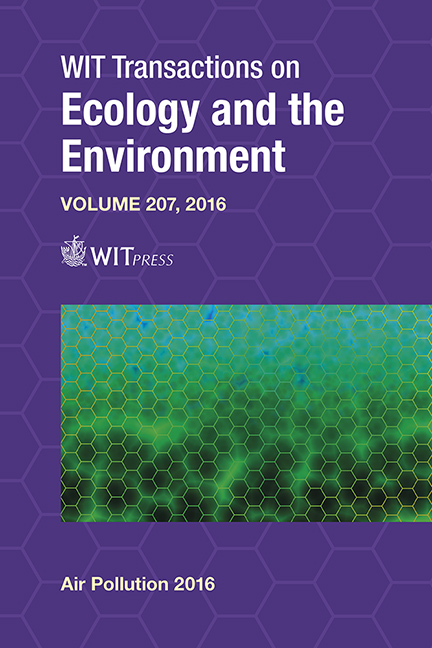Characterization And Source Identification Of Ambient Volatile Organic Compounds (VOCs) In A Heavy Pollution Episode In Beijing, China
Price
Free (open access)
Transaction
Volume
207
Pages
11
Page Range
249 - 259
Published
2016
Size
347 kb
Paper DOI
10.2495/AIR160231
Copyright
WIT Press
Author(s)
Y. Q. Li, J. Li, R. R. Wu, S. D. Xie
Abstract
102 ambient VOC species were measured online by a gas chromatography-mass spectrometry/flame ionization detector (GC/MS-FID) at an urban site in Beijing during a heavy pollution episode in December 2014. VOC sources were identified by correlation analysis of particular species pairs. The interspecies correlations of benzene-acetylene, toluene-acetylene, isobutane-propane and ethane-propane were analyzed by calculating the correlation coefficients. Major sources were concluded by comparing the linear regression slopes with previous studies. Alkanes provided the largest contribution to ambient VOCs, accounting for 38.9% of total VOCs; followed by alkenes and alkynes, accounting for 28.7% and 11.8%, respectively. The most abundant VOC species include ethene, ethane, acetylene and propane, with hourly average mixing ratios of 14.85, 14.47, 9.69 and 7.27 ppbv, respectively. VOC groups including alkanes, alkenes and alkynes, and the most abundant species followed a similar pattern of average diurnal variation. VOC mixing ratios decreased after sunrise and reached a minimum value at noon (12:00–14:00), then increased in the afternoon and reached a peak value at night (22:00–23:00). This likely resulted from a descending boundary layer at night and possible night emissions. There was no pronounced diurnal variation in oxygenated VOCs (OVOCs). LPG-related sources and combustion sources were major VOC sources in this heavy pollution episode.
Keywords
ambient VOCs, heavy pollution, concentration levels, time series, diurnal variations, interspecies correlations, VOC sources





